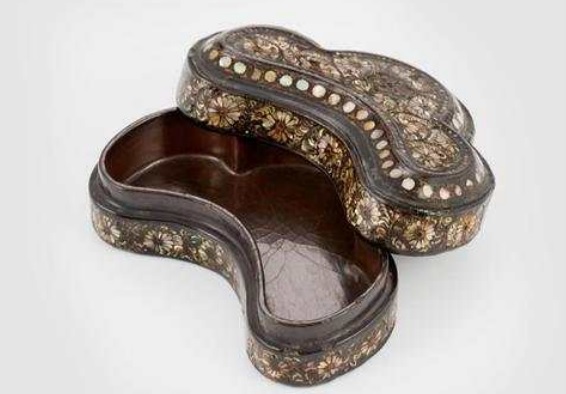The Cultural Heritage Administration of Republic of Korea (Administrator, Chung Jae-suk) is revealing to the press the Goryeo Lacquered Box Inlaid with Mother-of-pearl Chrysanthemum and Scroll Design at the National Palace Museum of Korea for the first time since the box was returned from Japan last December. An example of the stunning lacquerware produced during the Goryeo Dynasty that demonstrates the quintessence of the era’s art, this was originally part of a set of nested boxes. Only three boxes from the original set have survived intact, and this one from a private collection was the only one that could be purchased. Its return is the fruit of all-out efforts by the Overseas Korean Cultural Heritage Foundation (Chairman, Choi Eungchon), which applied its years of experience and expertise and skillfully negotiated with its former owner as mandated by the Cultural Heritage Administration. It is deeply meaningful for Korea, as the birthplace of Goryeo mother-of-pearl-inlaid lacquerware, to acquire an inner box from a set of nested mother-of-pearl-inlaid lacquered boxes for the first time.
 |
| 자료 제공 : 문화재청 |
Goryeo lacquerware with mother-of-pearl inlay was highly praised at the time, as noted in the description “exquisite and precious” offered by Song Chinese imperial envoy Xu Jing, who visited Goryeo and wrote the Illustrated Account of the Xuanhe Embassy to Goryeo in 1123 (the first year of Goryeo King Injong’s reign). Together with Goryeo celadon and Buddhist painting, it has been considered definitive of the aesthetics of the time. Around twenty Goryeo mother-of-pearl-inlaid lacquerware items are known to exist today, with most collected by major museums in the United States and Japan. Only two items were housed in Korea before the return of this box.
The returned box is approximately 10 centimeters long and weighs around 50 grams. The brilliant abalone shell, gently colored tortoiseshell, and elaborate metal wire inlay decorations make the box a masterpiece that reflects the characteristic refined beauty of Goryeo lacquerware inlaid with mother-of-pearl designs.
 |
| 자료 제공 = 문화재청 |
On the lid and body of the box is a chrysanthemum and scroll design as the main motif. Densely arranged mother-of pearl ornaments, cut too small to be picked up even by the fingertips, strike an elegant rhythm. The large flower and the stamen of a chrysanthemum at the center of the lid show the use of tortoiseshell that has been ground flat and transparent enough to reflect the colors painted on the reverse side, a decoration technique characteristic of Goryeo mother-of-pearl-inlaid lacquerware. The edges of the lid are densely decorated with a pearl design. Scroll designs made of metal wire, the twisted metal wire adorning the outlines of the box, and other designs create an elegant harmony.
The Cultural Heritage Administration commissioned the National Research Institute of Cultural Heritage (Director, Ji Byong Mok) to conduct non-destructive analysis of the lacquered box in order to scientifically analyze the production techniques and materials applied and safely collect basic data for comparative study. This analysis was conducted from January through March this year and revealed that the returned box was made using techniques and materials common to the production of Goryeo mother-of-pearl-inlaid lacquerware. The frame of the box was made of wood, which was then coated with cloth and lacquered. Cuts were made at regular intervals inside the wooden frame to allow a curved body. The body was created by adding side walls to the base and top walls.
The returned mother-of-pearl-inlaid lacquerware will be transferred to the National Museum of Korea (Director-General, Bae Kidong) and celebrated in diverse exhibitions, publications, and research projects. This lacquered box with mother-of-pearl inlay was first displayed to the Korean public in 2006 at the special exhibition “Korean Lacquerwares: The Everlasting Beauty” held at the National Museum of Korea. Fourteen years later, it will appear again in front of the public this winter at the special exhibition “Ancient Colors: Lacquer” at the National Museum of Korea (December 22, 2020 to March 7, 2021)—this time as a wholly Korean possession.
Taking the opportunity of this successful return, the Cultural Heritage Administration will continue making efforts to discover and retrieve important cultural properties and build close cooperative relations with related institutions for the efficient implementation of projects connected to the retrieval, research, exhibition, and promotion of cultural properties located overseas. In so doing, it will work to offer further opportunities for Koreans to experience precious Korean cultural heritage.
차보람 기자 carboram@hanmail.net






